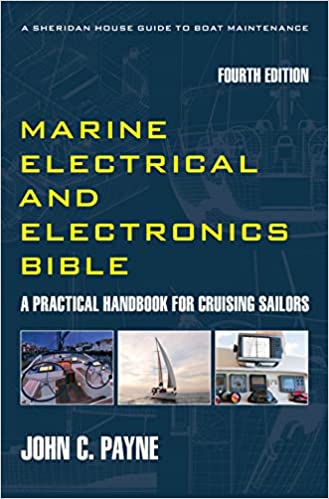Boat Shore Power
Boat Shore Power is all about having AC power on board when in the marina. The increasing use of appliances such as air conditioning, washing machines, stoves, hot water, TVs, power tools and other devices and other creature comforts requires more power both on shore power and away from the marina. While there have been some great developments that reduce energy demand (which is great news for cruising yacht sailors), such as battery powered tools, lower energy requirements for TV’s, there are so many gadgets that people use that having the power to keep them running is critical.
Boat Shore Power Electricity Safety
WARNING: AC power is potentially lethal, and AC systems and equipment must be correctly selected, installed and maintained. The following safety precautions must be undertaken at all times when carrying out work.
Learn how to perform, CPR and artificial respiration.
Never work on "live" equipment. Always isolate and lock out equipment before opening. Attach a Danger Tag if there is any chance someone can switch the circuit on.
Never work on AC equipment alone. Always have someone ready to assist if you accidentally receive an electric shock. It is better if you are not qualified to work on AC power to get someone who is!
Always Isolate all AC Power Sources. Always remove the boat shore power plug, isolate the inverter or any automatic changeover system if installed on your boat before checking anything on the AC power switchboard so that no power source remains connected to the system. Verify it is isolated by testing AC power circuits, such as start attempts on equipment or lighting and so on. Double check with a voltage detector or meter.
Disclaimer
Recommendations contained within this section are advisory only and do not override or substitute the legal responsibilities of boat owners to meet specific national and regulatory requirements. Connection of your vessel to a marina boat shore power system imposes certain obligations on you the boat owner. A vessel must comply with your national or other electrical standards. Check out the Boat Wiring Regulations here.
Boat Shore Power
All boat AC electrical systems including a boat shore power system should be installed and tested by an AC qualified and appropriately licensed electrician. Where possible, always use a qualified and AC licensed marine electrician, or a shore based AC licensed industrial electrician rather than a domestic house wiring electrician. Regardless of what they say their accreditation is check they actually are a qualified electrician.
What is their insurance coverage for doing work on your boat? Ask to see proof of liability insurance. Here is a warning to those who like DIY, an accident caused by a fault in the AC electrical system due to incorrect wiring may void your insurance policy and more important expose you to criminal and civil liability. Many "marine" electricians have automotive backgrounds and are not AC qualified regardless of their DC abilities, some have various marine accreditation so check first, ask to see the electrical license!
Boat Shore Power Components
The components in a boat shore power system are the following, we need to look at all the items that make up what is a deceptively simple system:
The Dock Shore Power Receptacle, this is the dock or marina boat shore power pedestal and includes the socket, local circuit isolation. The Boat Shore Power Receptacle is not a simple as it sounds.
The Boat shore power cord holder. This is what you support your boat shore power lead or cord with so it doesn’t fall in the water or present a trip hazard.
The Boat shore power cord adapter. This is used for adapting various boat shore power plugs to different ones so you can plug into a shore power pedestal. Also there are the Marine Shore Power y Adapter which are used to power a single boat shore power lead through two supplies to increase power.
The Boat Shore Power Lead. This is the lead, cable or cord connecting the shore power pedestal with your boat. Many raise the issue of cleaning shore power cords and here is some useful advice. Shore power leads for boats come in a range of types and ratings. There are the 15 amp shore power cord and the 20 amp shore power lead, and there are the 30 amp shore power leads and 50 amp shore power splitter. There are the 50 foot shore power cord and the 75 foot shore power cord. You can purchase a Boat shore power kit and also people look for Boat shore power kit UK.
Boat Shore Power Components
The boat shore power plug. This is the boat shore power plug on the boat end of the shore power lead. There are many shore power plug types. Many have asked me about the Smart plug shore power connection. Check out the Hubbell shore power plug. Also check Marinco shore power systems. Both Marinco and Hubbell are manufacturers of high quality shore power equipment so invest in safe and reliable equipment.
Dock Shore Power Receptacle. This is the boat shore power receptacle installed on your boat for plugging in the shore power lead.
Shore Power Isolation Transformer. These are sometimes installed on steel and aluminum hull vessels.
Shore Power Circuit Breaker. This is part of the onboard protection and includes primary overload and short circuit protection including the GFCI installed on your boat.
The Galvanic Isolator. Often installed on boats as part of the shore power system and designed to eliminate corrosion.
Read more about Boat Shore Power and how to install and look after it.
